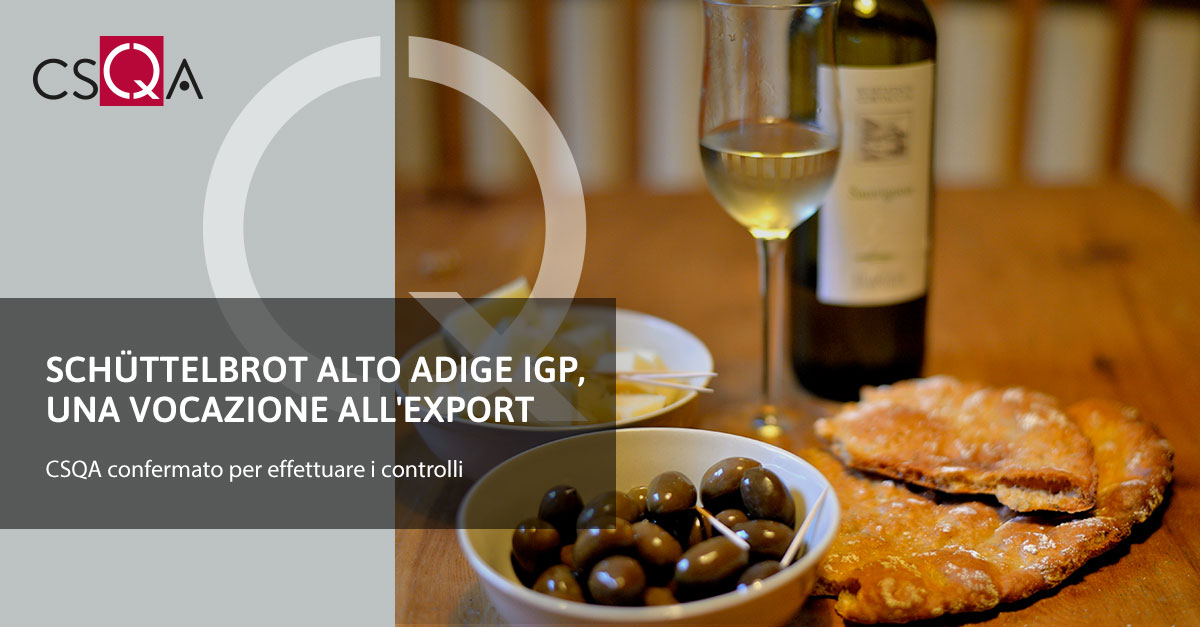 The Central Inspectorate for the Protection of Quality and Repression of Fraud (ICQRF) of agri-food products of the Ministry of Agriculture, Food Sovereignty and Forestry (Masaf) has renewed the authorization , with Ministerial Decree, for CSQA to carry out checks for the Indication Geographically Protected Südtiroler Schüttelbrot / Schüttelbrot Alto Adige for the next three years.
The Central Inspectorate for the Protection of Quality and Repression of Fraud (ICQRF) of agri-food products of the Ministry of Agriculture, Food Sovereignty and Forestry (Masaf) has renewed the authorization , with Ministerial Decree, for CSQA to carry out checks for the Indication Geographically Protected Südtiroler Schüttelbrot / Schüttelbrot Alto Adige for the next three years.Schüttelbrot is a dry rye bread, with a flattened and round irregular shape, with irregular alveolation, crunchy, storable, aromatic with a marked fennel note, which can be slightly acidic, with a humidity of up to a maximum of 11% produced in the entire territory of the autonomous province of Bolzano.
Schüttelbrot Alto Adige PGI, whose origins date back to the Middle Ages , is a product particularly suitable for export both for the quality of the product and for its recognized historical and cultural origin.
In fact, unlike many other breads for which fresh consumption is favored almost exclusively, this bread, being able to be preserved for many months (up to 18 months), has its own export market which includes Australia, Austria among the countries with the highest consumption. , Canada, Germany, Switzerland and UK.
The origins are very ancient . A written document from the Schüttelbrot can be found for the first time in the Tyrolean Bakers' Ordinance in 1610.
Here the composition of the dough and the shaking technique to shape the focaccia are documented.
However, it can be assumed that the Schüttelbrot has existed in its current or similar form for much longer. Ancient medieval writings provide information on the production of Schüttelbrot bread and the art of baking in South Tyrol.
The reason for its production lies in the geography/orography of Alto Adige and the consequent need to produce foods that could be preserved .